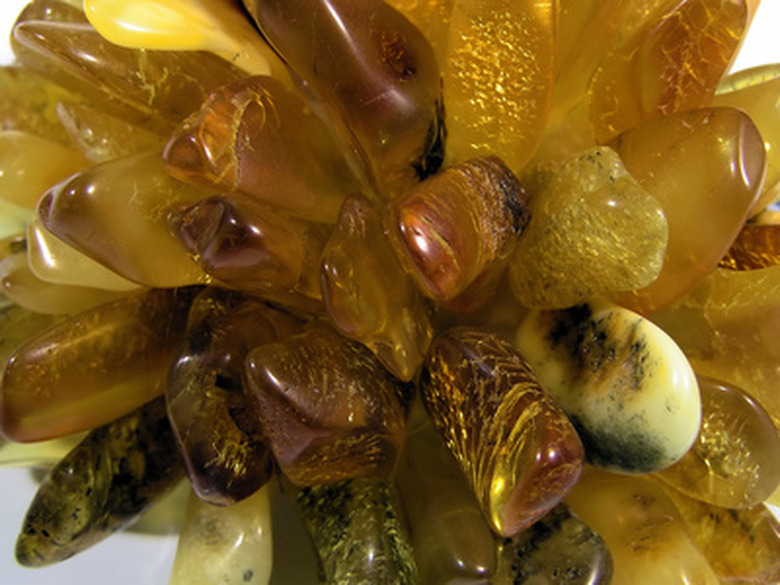How To Find Prehistoric Amber
Fossil resin was first called amber in the 1400s. It was confused with ambergris, a precious oil from sperm whales, because they are similar in color, and both washed up on shore after brisk windstorms. Amber ranges from black to red and pale gold. Amber is fossilized pine resin from the tree Pinus succinifera which grew roughly 45 million years ago.The oldest amber found is believed to have come from the Upper Carboniferous period nearly 345 million years ago. According to to Devo Digest Amber is heavily deposited around the Baltic Sea.
Step 1
Wait for a day with appropriate weather conditions. Amber only comes up on shore when winds are strong enough to bring the amber pieces up from the seabed.
Step 2
Consult a tide calendar. Plan to go out when the water is at low tide.
Step 3
Go to the beach. Beaches in Europe are most well known for their amber deposits, but beaches and some river banks all over the world can have amber. Emporia State University gives a list of locations where amber can be found.
Step 4
Walk along the tide line. This is where the amber is most likely to have settled.
Step 5
Look in clumps of seaweed for pieces of amber. Amber commonly gets caught up in seaweed and flotsam.
Step 6
Check your findings to determine if they are amber. Rub the stone against the arm of a sweater and then hold it against your arm hair. If the hair stands up, the stone is most likely a true piece of amber.
Cite This Article
MLA
Barton, Misty. "How To Find Prehistoric Amber" sciencing.com, https://www.sciencing.com/prehistoric-amber-7516630/. 24 April 2017.
APA
Barton, Misty. (2017, April 24). How To Find Prehistoric Amber. sciencing.com. Retrieved from https://www.sciencing.com/prehistoric-amber-7516630/
Chicago
Barton, Misty. How To Find Prehistoric Amber last modified March 24, 2022. https://www.sciencing.com/prehistoric-amber-7516630/
